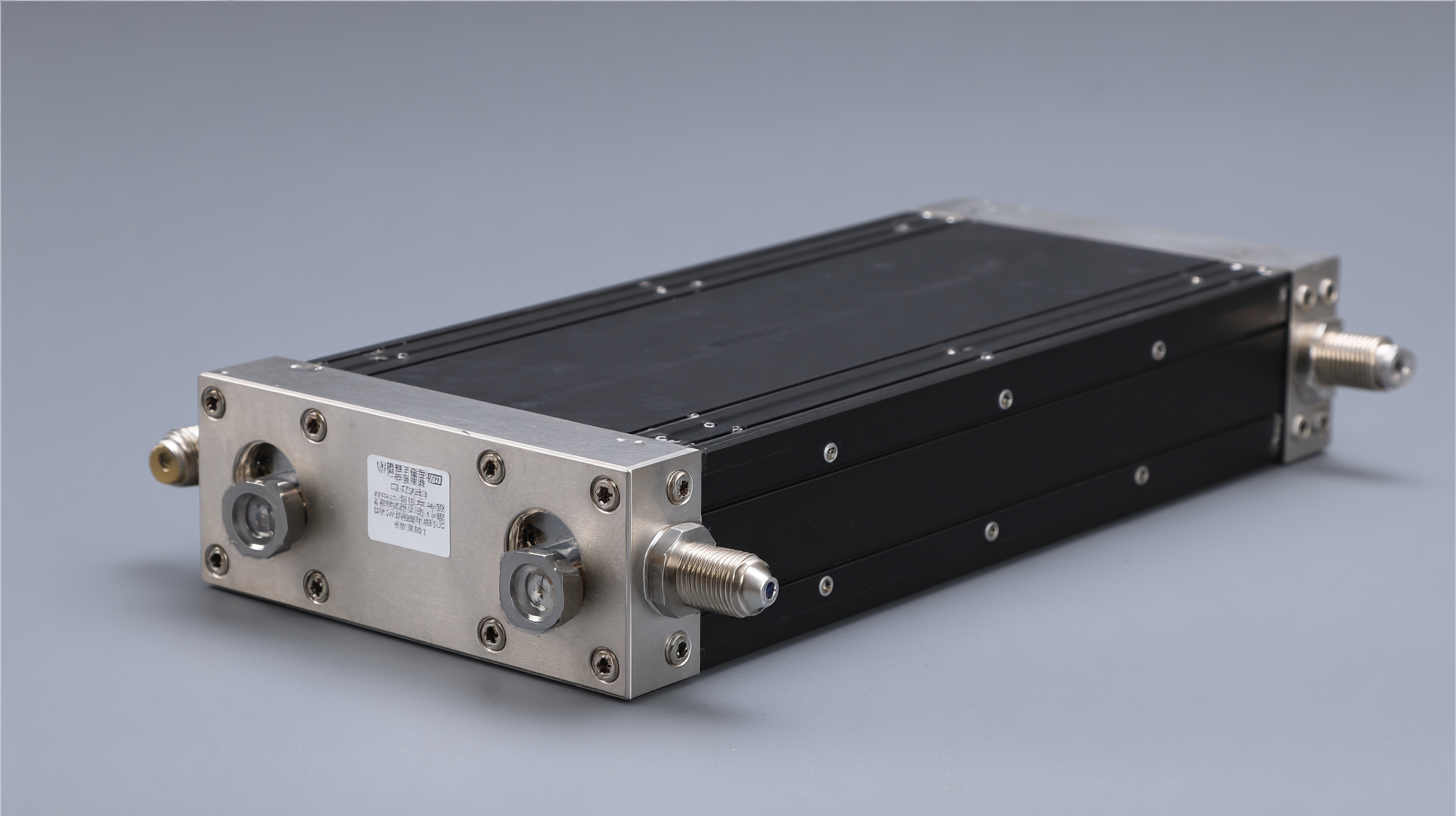Services
Ultimate Checklist for Sourcing the Best Microchannel Plate Image Intensifier Globally
In the evolving landscape of imaging technologies, the Microchannel Plate Image Intensifier has emerged as a pivotal component in various industries, including defense, medical diagnostics, and scientific research. According to a report by MarketsandMarkets, the global market for image intensifiers is projected to grow at a CAGR of 6.5% from 2021 to 2026, underscoring the increasing demand for high-performance imaging solutions. The Microchannel Plate Image Intensifier stands out for its ability to enhance image quality under low-light conditions, enabling clearer visibility in critical applications.
As organizations seek to source the best intensifiers tailored to their needs, understanding the benefits of different types of microchannel plates becomes essential. This ultimate checklist will guide you through the intricacies of selecting the most suitable Microchannel Plate Image Intensifier, maximizing performance and reliability.

Understanding Microchannel Plate Image Intensifiers: Key Features to Consider
When sourcing a microchannel plate (MCP) image intensifier, it's crucial to understand the key features that determine performance and application suitability. One of the primary considerations is the gain and resolution of the intensifier. According to a report by Research and Markets, the global market for MCP image intensifiers is projected to reach $2.5 billion by 2026, largely driven by advancements in military and medical imaging technologies. Higher gain typically results in better light amplification, providing clearer images in low-light conditions, which is essential for applications such as night vision and high-speed photography.
Another critical feature is the response time, measured in nanoseconds, which influences how quickly the device can process images. A faster response time is essential for capturing rapid events, making it a key factor in fields like scientific research and defense. For example, devices with a response time of less than 10 nanoseconds are becoming increasingly popular, as they allow for the observation of phenomena that change rapidly.
**Tips**: When evaluating MCP image intensifiers, ensure to check the specifications for signal-to-noise ratio (SNR) as well. A higher SNR means better image quality, particularly in challenging lighting conditions. Moreover, consider the operational lifespan of the intensifiers; devices that come with a warranty or service agreements are generally a safer investment, as they reflect the manufacturer's confidence in their product durability.
Ultimate Checklist for Sourcing Microchannel Plate Image Intensifiers
This bar chart illustrates key features to consider when sourcing microchannel plate image intensifiers, including resolution, gain, dynamic range, noise equivalent power, and operational lifetime.
Evaluating Performance: Sensitivity, Gain, and Resolution Metrics
When sourcing the best microchannel plate (MCP) image intensifiers globally, evaluating key performance metrics such as sensitivity, gain, and resolution is vital. Sensitivity reflects the device's ability to detect faint light signals, which is crucial in applications like night vision and low-light imaging. A higher sensitivity rating indicates that the intensifier can amplify even minimal light inputs, resulting in clearer and more detailed images. This metric is often a deciding factor for professionals seeking reliable performance in challenging environments.
Gain, another significant parameter, quantifies the amplification provided by the MCP image intensifier. It's expressed as a ratio of output signal to input signal, with higher gain values delivering brighter images from the same light source. However, it's essential to balance gain with the risk of noise introduction, as excessive amplification can lead to degradation in image quality. Additionally, resolution determines the level of detail captured in the images. It’s defined by the ability to distinguish between closely spaced objects. Higher resolution is critical for applications demanding precision, such as scientific research and surveillance. Understanding these metrics helps ensure that users invest in an image intensifier that meets their specific needs effectively.
Comparing Global Manufacturers: Reputation and Reliability in the Market
In the dynamic landscape of image intensification technology, evaluating global manufacturers for microchannel plate (MCP) image intensifiers is crucial. According to a recent industry report by MarketsandMarkets, the global image intensifier market is projected to reach $2.6 billion by 2025, with a significant demand for reliable and high-performance intensifiers across various applications. As companies venture into sourcing these critical components, examining the reputation and reliability of manufacturers can significantly impact operational success.

Tips for selecting a reputable manufacturer include verifying certifications and compliance with international standards, which can serve as indicators of quality assurance. Additionally, customer reviews and case studies can provide valuable insights into a manufacturer's track record. Notably, manufacturers like Photek and Hamamatsu have established strong reputations in the industry, contributing to advancements in image intensification technology.
Another essential consideration is warranty and after-sales support. A manufacturer that offers comprehensive support can mitigate risks and ensure a smoother integration process. According to a report by Grand View Research, the focus on high-quality customer service is becoming increasingly important, with businesses rating supplier reliability as a top criterion in their sourcing decisions. This prioritization of reliability and support underscores the importance of making informed choices when sourcing MCP image intensifiers globally.
Assessing Cost-Effectiveness: Budgeting for Quality vs. Affordability
When it comes to sourcing a microchannel plate image intensifier, understanding the balance between quality and affordability is crucial. While it may be tempting to opt for the lowest-priced options available, the long-term financial implications of choosing a subpar product can outweigh initial savings. High-quality intensifiers offer superior performance, longevity, and reliability—factors that can significantly reduce maintenance costs and downtime in the long run. Therefore, it's essential to assess not just the purchase price but the overall value that a high-quality product can bring to your operations.
Budgeting for these devices requires a strategic approach. Start by evaluating your specific needs and research the various brands and models available. Look beyond the sticker price; consider factors such as warranty offerings, customer support, and the availability of replacement parts. Taking the time to conduct a thorough cost-effectiveness analysis can help ensure that your investment not only meets your current budget but also aligns with your project goals, leading to enhanced operational efficiency and better outcomes over time. Prioritizing quality in this critical equipment will ultimately provide a more sustainable solution for your imaging needs.
Ultimate Checklist for Sourcing the Best Microchannel Plate Image Intensifier Globally - Assessing Cost-Effectiveness: Budgeting for Quality vs. Affordability
| Feature | High-End Option | Mid-Range Option | Budget Option |
|---|---|---|---|
| Gain | 1000 - 5000 | 800 - 3000 | 600 - 2000 |
| Resolution (lp/mm) | 50 - 100 | 30 - 70 | 20 - 50 |
| Size (mm) | 60 x 60 | 50 x 50 | 40 x 40 |
| Weight (kg) | 1.5 | 1.2 | 0.9 |
| Typical Price ($) | $5000 | $3000 | $1500 |
| Operational Life (hours) | 40000 | 30000 | 20000 |
Selecting the Right Application: Tailoring Image Intensifiers to Specific Needs
When it comes to sourcing the best microchannel plate image intensifiers, understanding the specific application is paramount. Different industries—from defense and security to astronomy and biomedical imaging—require unique performance characteristics tailored to their needs.
According to a recent report by MarketsandMarkets, the global image intensifier market is projected to reach $1.2 billion by 2025, with a significant portion driven by advancements in night vision technologies and the increasing demand for high-sensitivity imaging solutions.
Selecting the right image intensifier begins with identifying the application’s requirements: resolution, sensitivity, and durability. For instance, in the defense sector, high-resolution imaging under varying light conditions is crucial, necessitating robust intensifiers that can withstand harsh environments.

Understanding these nuances ensures that organizations choose the most suitable image intensifier, aligning with both performance standards and budget constraints, thereby maximizing the return on investment.
